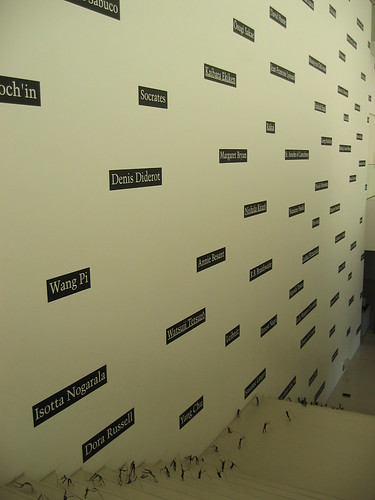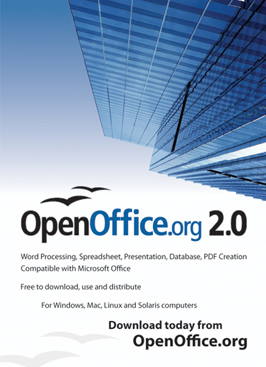Within the context of the FLOSSMETRICS project we are performing a study on the business models adopted by companies that are leveraging FLOSS source code, and how the model changes with respect of licenses and commercialization approaches.In this post I present a draft of the result of 80 FLOSS-based companies and business models, conducted using only publicly available data. Feedbacks and suggestions are welcome!
 Practical taxonomy by ellen’s attic
Practical taxonomy by ellen’s attic
Methodology
An initial list of 120 companies was prepared during the first two month of 2007 using some popular open source news websites as source like FreshMeat, Slashdot.org, OSNews, LinuxToday, NewsForge and some blog sites devoted to FLOSS business models like those of Matt Asay, Fabrizio Capobianco, Roberto Galoppini. Additional information was retrieved from Google searches. this list was further refined by eliminating companies that were not really adopting FLOSS, even using a very relaxed definition. In the specific, any company that allowed source code access only to non-commercial users, or that did not allowed for redistribution was dropped from the list; also, companies for which no information was available, or for which no clear product or service was identifiable was equally eliminated. One of the companies included (Sourceforge, from the OSTG group) is not open source in itself, but represents an example of an “ancillary†model, as the site itself hosts more than 100000 open source projects and provides supporting services like mailing lists, source code versioning systems and file distribution. Also, companies that have a significant OSS contribution, but for which FLOSS is not the core business model were not included (this for example includes IBM, HP and Sun; all of which are important FLOSS contributors, but for which open source software is just one of the overall revenue streams).
Results
The final result is summarized in a table (pdf), the 6 main clusters identified are:
Twin licensing: the same software code distributed under the GPL and a commercial license. This model is mainly used by producers of developer-oriented tools and software, and works thanks to the strong coupling clause of the GPL, that requires derivative works or software directly linked to be covered under the same license. Companies not willing to release their own software under the GPL can buy a commercial license that is in a sense an exception to the binding clause; by those that value the “free as in speech†idea of free/libre software this is seen as a good compromise between helping those that abide to the GPL and receive the software for free (and make their software available as FLOSS) and benefiting through the commercial license for those that want to maintain the code proprietary. The downside of twin licensing is that external contributors must accept the same licensing regime, and this has been shown to reduce the volume of external contributions (that becomes mainly limited to bug fixes and small additions).
Split OSS/commercial products: this model distinguish between a basic FLOSS software and a commercial version, based on the libre one but with the addition of proprietary plugins. Most companies adopt as license the Mozilla Public License, as it allows explicitly this form of intermixing, and allows for much greater participation from external contributions, as no acceptance of double licensing is required. The model has the intrinsic downside that the FLOSS product must be valuable to be attractive for the users, but must also be not complete enough to prevent competition with the commercial one. This balance is difficult to achieve and maintain over time; also, if the software is of large interest, developers may try to complete the missing functionality in a purely open source way, thus reducing the attractiveness of the commercial version.
Badgeware: a recent reinvention/extension of a previous license constraint, that is usually based on the Mozilla Public License with the addition of a “visibility constraintâ€, the non-removability of visible trademarks or elements from a user interface. This allows the company to leverage trademark protection, and allows the original developers to receive recognition even if the software is resold through independent resellers.
Product specialists: companies that created, or maintain a specific software project, and use a pure FLOSS license to distribute it. The main revenues are provided from services like training and consulting (the “ITSC†class) and follow the original “best code here†and “best knowledge here†of the original EUWG classification. It leverages the assumption, commonly held, that the most knowledgeable experts on a software are those that have developed it, and this way can provide services with a limited marketing effort, by leveraging the free redistribution of the code. The downside of the model is that there is a limited barrier of entry for potential competitors, as the only investment that is needed is in the acquisition of specific skills and expertise on the software itself.
Platform providers: companies that provide selection, support, integration and services on a set of projects, collectively forming a tested and verified platform. In this sense, even linux distributions were classified as platforms; the interesting observation is that those distributions are licensed for a significant part under pure FLOSS licenses to maximize external contributions, and leverage copyright protection to prevent outright copying but not “cloning†(the removal of copyrighted material like logos and trademark to create a new product). The main value proposition comes in the form of guaranteed quality, stability and reliability, and the certainty of support for business critical applications.
Selection/consulting companies: companies in this class are not strictly developers, but provide consulting and selection/evaluation services on a wide range of project, in a way that is close to the analyst role. These companies tend to have very limited impact on the FLOSS communities, as the evaluation results and the evaluation process are usually a proprietary asset.
The remaining companies are in too limited number to allow for any extrapolation, but do show that non-trivial business model may be found on ancillary markets. For example, the Mozilla foundation obtains a non trivial amount of money from a search engine partnership with Google (an estimated 72M$ in 2006), while SourceForge/OSTG receives the majority of revenues from ecommerce sales of the affiliate ThinkGeek site.
Technorati Tags: Commercial Open Source, Business Models, FLOSSMetrics
![]() Opencamp logo, designed by
Opencamp logo, designed by 
 Practical taxonomy by
Practical taxonomy by  Openoffice.org ads by
Openoffice.org ads by 


Fabio Masetti 2:34 pm on April 19, 2007 Permalink
Ciao Roberto, sono fabio, organizzatore del RomeCamp e del prossimo VentureCamp a giugno dedicato al Venture Capital. Purtroppo non sono potuto venire all’OpenCamp ma ho letto il tuo post e quello del Senatore Cortiana. Ho visto che hai partlato di Venture e spero di incontrarti al prossimo barcamp. ciao ciao
Simone Onofri 11:55 pm on April 20, 2007 Permalink
Il numero dei partecipanti non influisce direttamente sul successo o no di un BarCamp, lo stesso Fabio (oramai un esperto in questo) ha detto in un recente post che i BarCamp esteri hanno un numero limitatissimo di partecipanti.. consideriamo poi che il tema è specifico il target stesso è più ristretto… insomma… pochi ma buoni!
PS. il logo dell’OpenCamp l’ho disegnato io 🙂